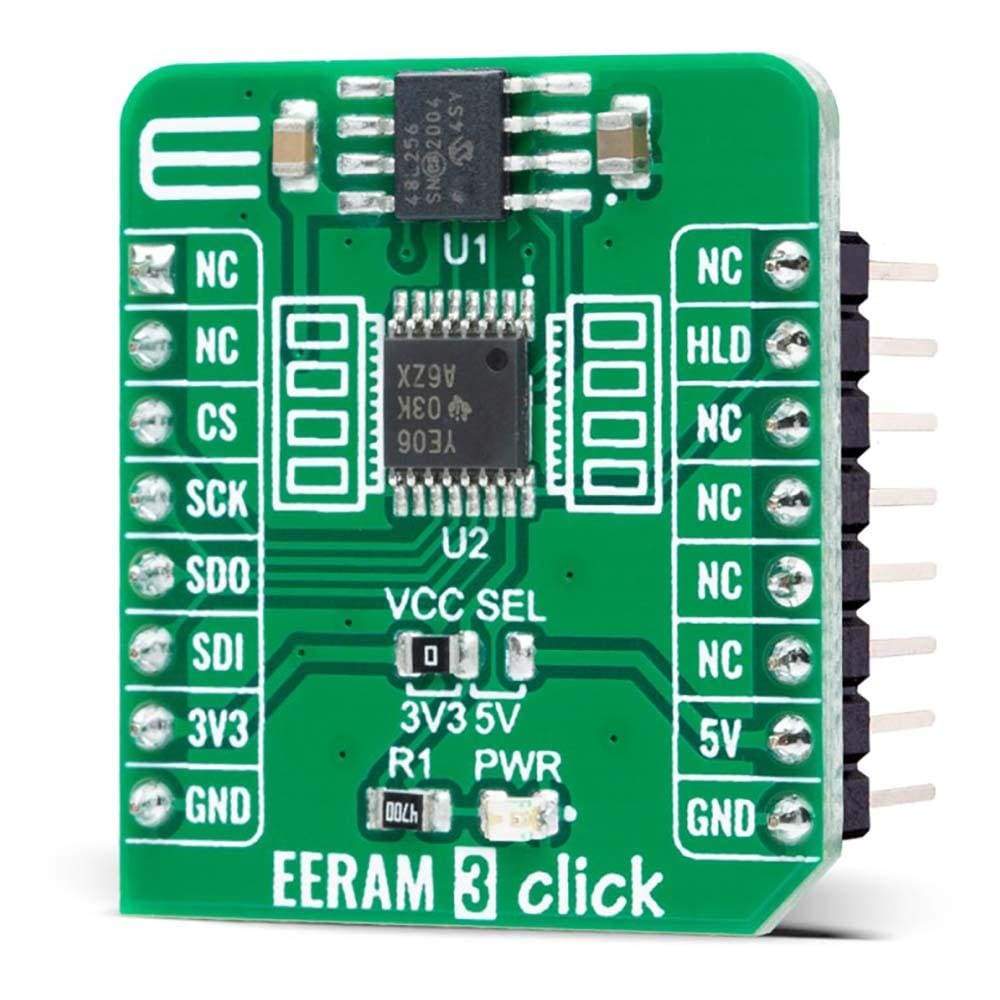
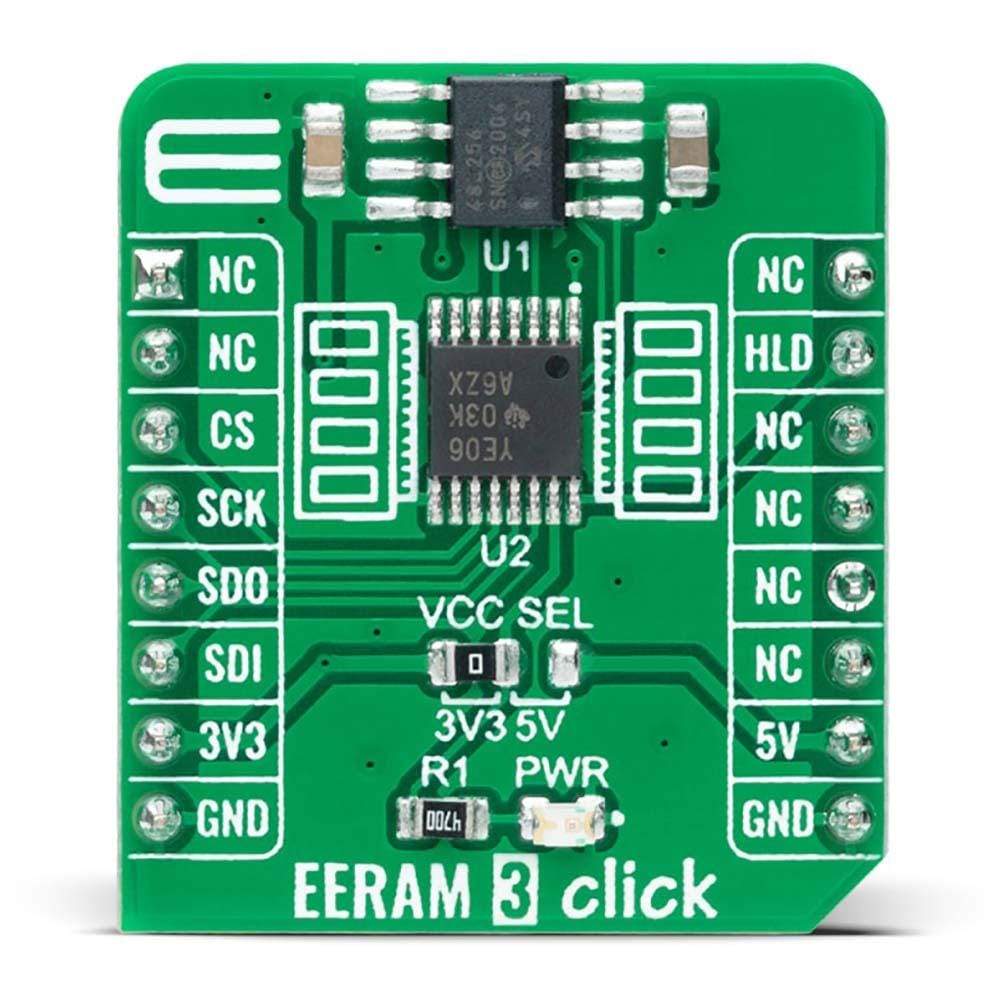
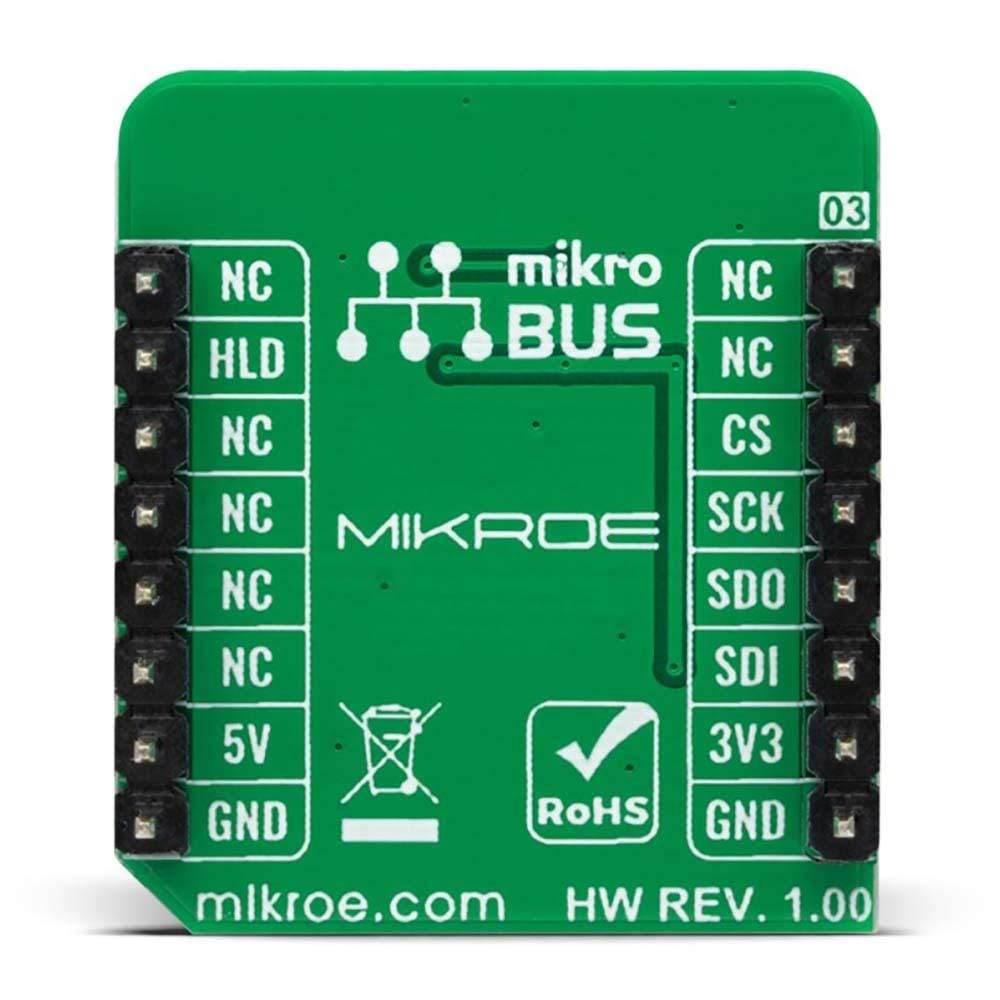
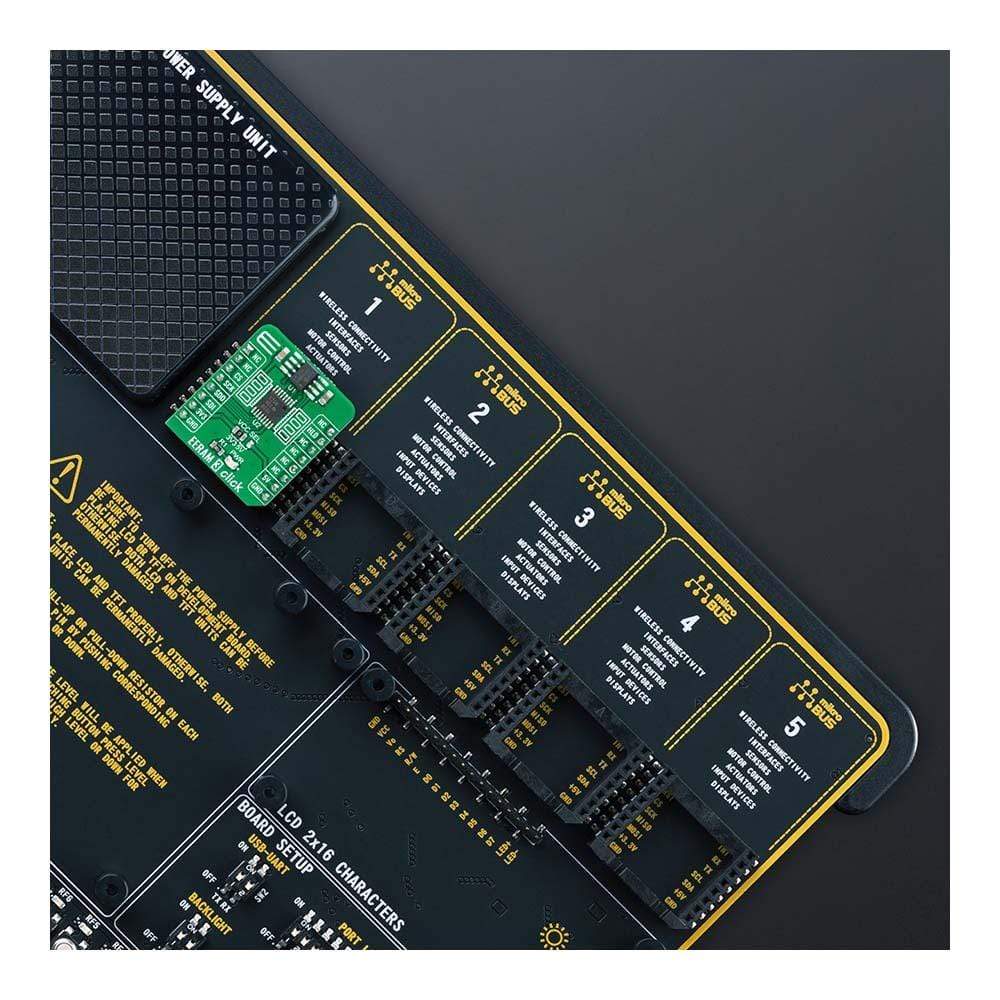
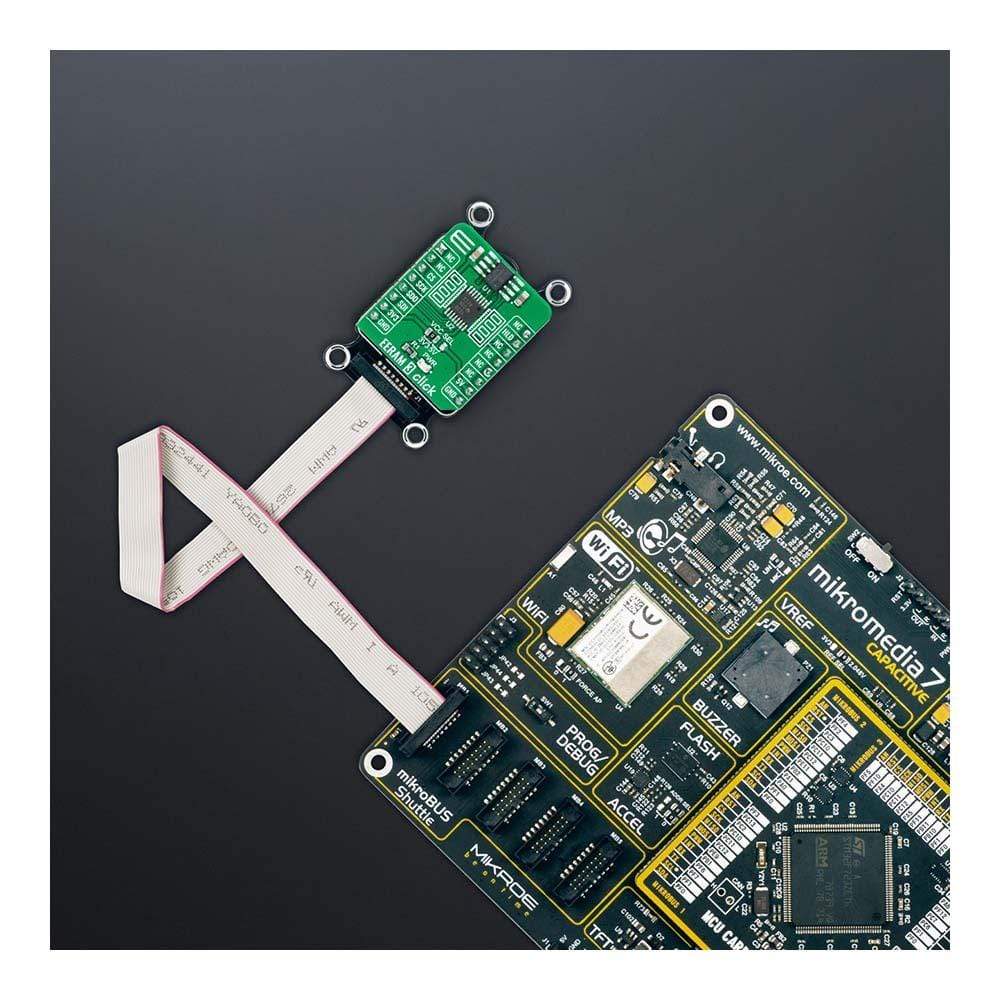
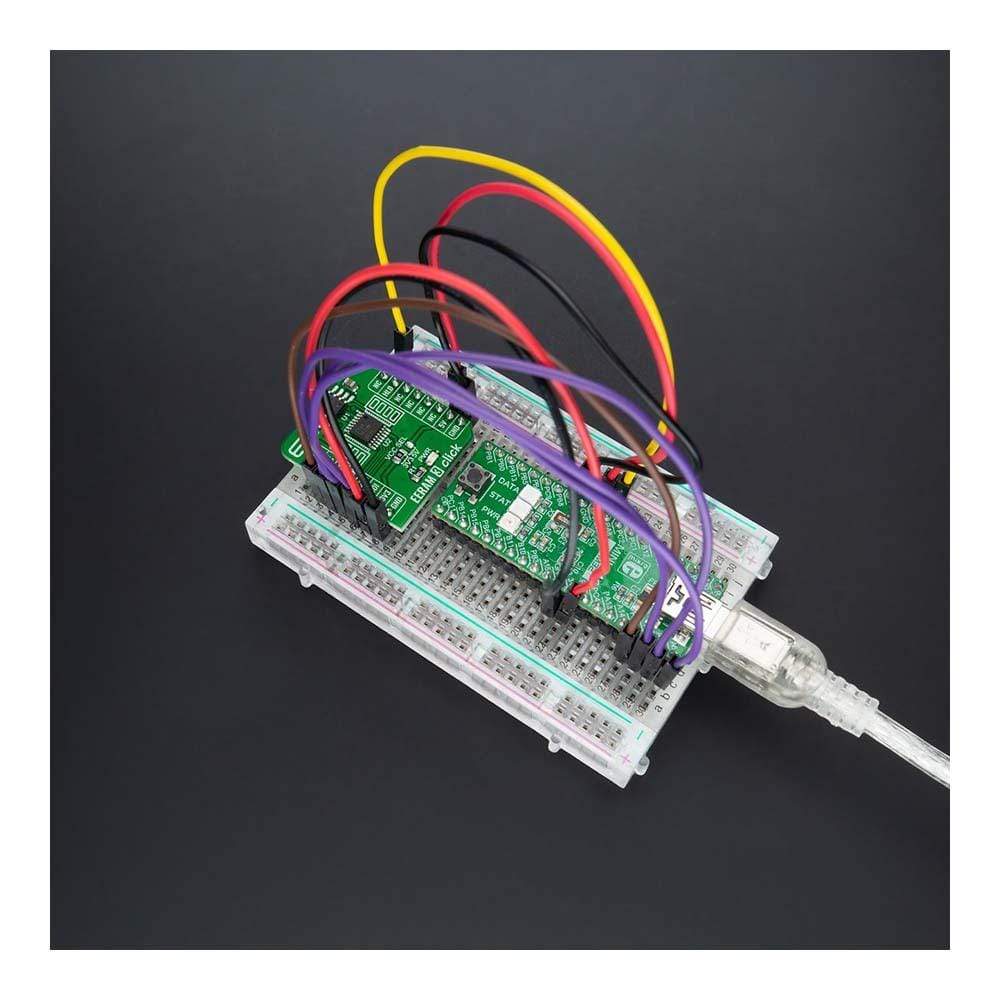
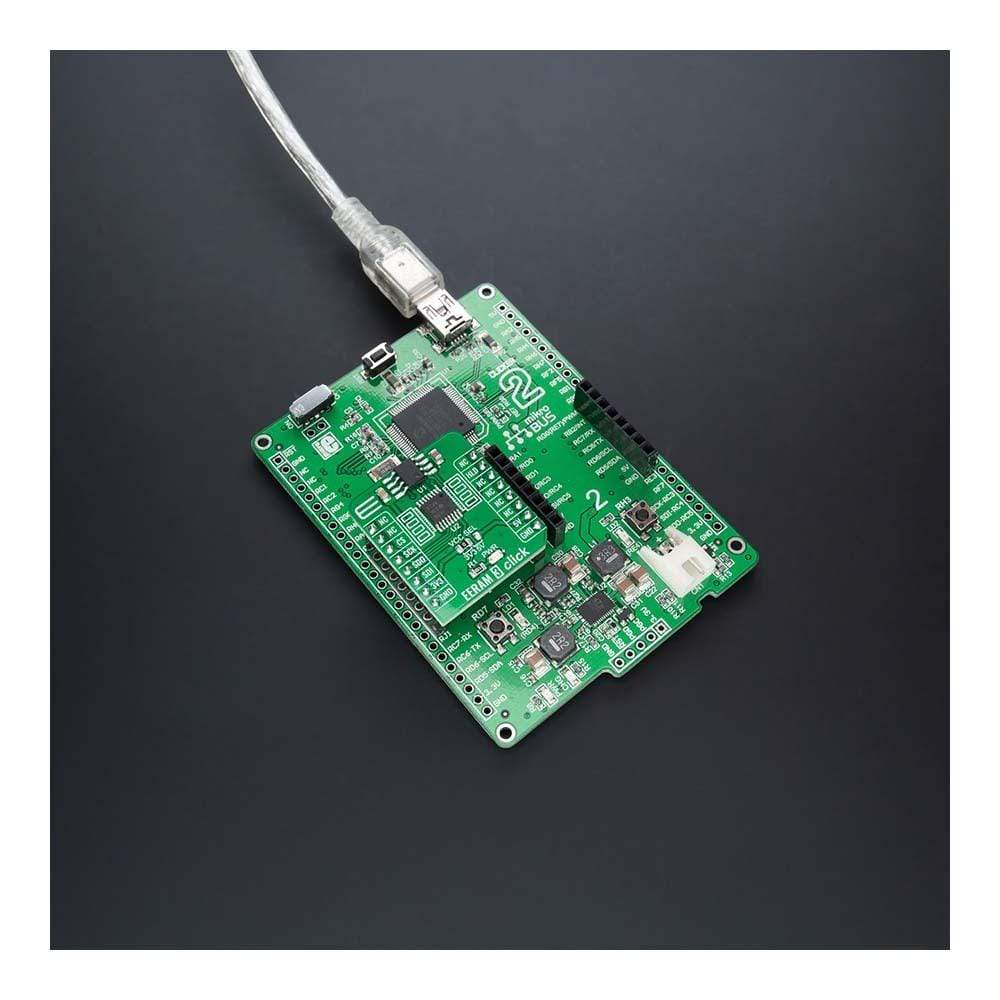
Overview
The EERAM 3 Click Board™ is a compact add-on board that contains EERAM memory designed to retain data during power loss without the aid of external batteries. This board features the 48L256, a serial EERAM with SRAM memory core, including hidden EEPROM backup from Microchip Technology. The 48L256 is structured as a 256-Kbit SRAM with EEPROM backup in each memory cell, where SRAM is organized as 32,768x8 bits and uses the SPI serial interface. It offers unlimited reads and writes, invisible-to-user data transfers on power loss, 100,000 backups (data can be transferred 100,000 times), and data retention (data is kept safe for ten years minimum).
The EERAM 3 Click Board™ is ideal for nonvolatile memory applications requiring frequent or rapid writes and unlimited endurance.
Downloads
How Does The EERAM 3 Click Board™ Work?
The EERAM 3 Click Board™ as its foundation uses the 48L256, an SPI nonvolatile EERAM memory IC designed to retain data when power is disrupted from Microchip Technology. The user can treat this Click board™ as a full symmetrical read/write SRAM: it allows symmetrical reads and writes and has no limits on cell usage. It is structured as a 256-Kbit SRAM with EEPROM backup in each memory cell, where SRAM is organized as 32,768x8 bits. The 48L256 specifies 100.000 endurance cycles with data retention of a minimum of 10 years, which gives the 48L256 the unique capability to handle unlimited reads/writes to the memory.
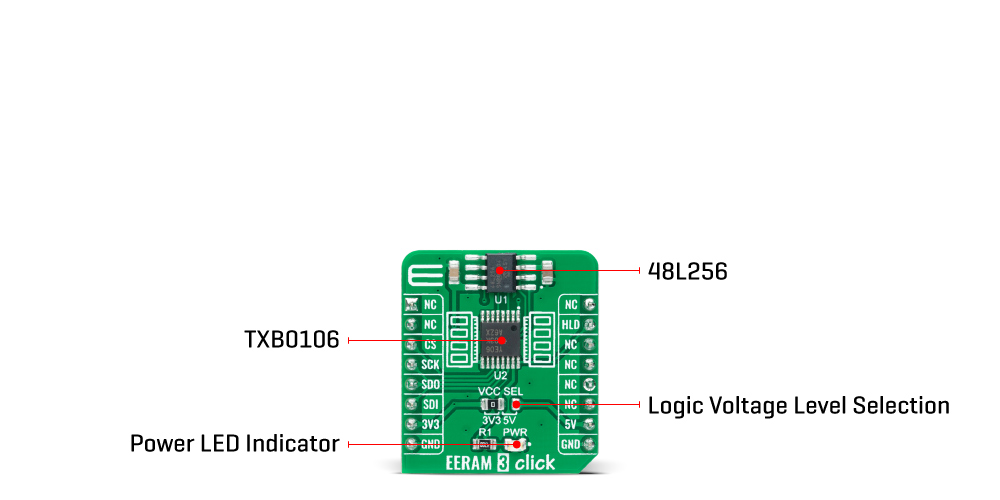
The backup EEPROM is invisible to the user and cannot be accessed by the user independently. The 48L256 includes circuitry that detects VCC voltage dropping below a certain threshold, shuts its connection to the outside environment, and transfers all SRAM data to the EEPROM portion of each cell for safekeeping. When VCC returns, the circuitry automatically returns the data to the SRAM, and the user's interaction with the SRAM can continue with the same data set.
The 48L256 communicates with MCU through a standard SPI interface that enables very high clock speeds up to 66MHz, supporting the two most common SPI modes - SPI Mode 0 and 3, and a proper logic voltage level conversion performed by the appropriate voltage level translator. The VCC logic level provides a needed reference voltage for one side of the TXB0106, a 6-bit bidirectional level shifting, and a voltage translator with automatic direction sensing from Texas Instruments. On another side of the level shifter, the reference voltage is taken from the 3.3V mikroBUS™ power rail.
Another feature of the EERAM 3 Click Board™ represents the configurable HOLD function labelled as HLD routed on the INT pin of the mikroBUS™ socket. The HLD pin is used to suspend transmission to the 48L256 while in the middle of a serial sequence without re-transmitting the entire sequence over again. It must be held high any time this function is not being used. Once the device is selected and a serial sequence is underway, the HLD pin may be pulled low to pause further serial communication without resetting the serial sequence.
The EERAM 3 Click Board™ can operate with both 3.3V and 5V logic voltage levels selected via the VCC SEL jumper. This way, it is allowed for both 3.3V and 5V capable MCUs to use the SPI communication lines properly. However, the Click board™ comes equipped with a library containing easy-to-use functions and an example code that can be used, as a reference, for further development.
Specifications
| Type | EERAM |
| Applications | Can be used for nonvolatile memory applications requiring frequent or rapid writes and unlimited endurance |
| On-board modules | 48L256 - serial EERAM with SRAM memory core, including hidden EEPROM backup from Microchip Technology |
| Key Features | Low power consumption, unlimited reads/writes, standard serial SRAM protocol, high-speed SPI interface, cell-based nonvolatile backup, data endurance and retention, and more |
| Interface | SPI |
| Compatibility | mikroBUS |
| Click board size | S (28.6 x 25.4 mm) |
| Input Voltage | 3.3V or 5V |
Pinout Diagram
This table shows how the pinout on the EERAM 3 Click Board™ corresponds to the pinout on the mikroBUS™ socket (the latter shown in the two middle columns).
| Notes | Pin |  |
Pin | Notes | |||
|---|---|---|---|---|---|---|---|
| NC | 1 | AN | PWM | 16 | NC | ||
| NC | 2 | RST | INT | 15 | HLD | SPI Suspension | |
| SPI Chip Select | CS | 3 | CS | RX | 14 | NC | |
| SPI Clock | SCK | 4 | SCK | TX | 13 | NC | |
| SPI Data OUT | SDO | 5 | MISO | SCL | 12 | NC | |
| SPI Data IN | SDI | 6 | MOSI | SDA | 11 | NC | |
| Power Supply | 3.3V | 7 | 3.3V | 5V | 10 | 5V | Power Supply |
| Ground | GND | 8 | GND | GND | 9 | GND | Ground |
ONBOARD SETTINGS AND INDICATORS
| Label | Name | Default | Description |
|---|---|---|---|
| LD1 | PWR | - | Power LED Indicator |
| JP1 | VCC SEL | Left | Logic Level Voltage Selection 3V3/5V: Left position 3V3, Right position 5V |
EERAM 3 CLICK ELECTRICAL SPECIFICATIONS
| Description | Min | Typ | Max | Unit |
|---|---|---|---|---|
| Supply Voltage | 3.3 | - | 5 | V |
| Memory Size | - | - | 256 | kbit |
| Write Endurance | 100.000 | - | - | Store Cycles |
| Data Retention | 10 | - | - | Years |
| Operating Temperature Range | -40 | +25 | +85 | °C |
| General Information | |
|---|---|
Part Number (SKU) |
MIKROE-4854
|
Manufacturer |
|
| Physical and Mechanical | |
Weight |
0.02 kg
|
| Other | |
Country of Origin |
|
HS Code Customs Tariff code
|
|
EAN |
8606027384004
|
Warranty |
|
Frequently Asked Questions
Have a Question?
Be the first to ask a question about this.







